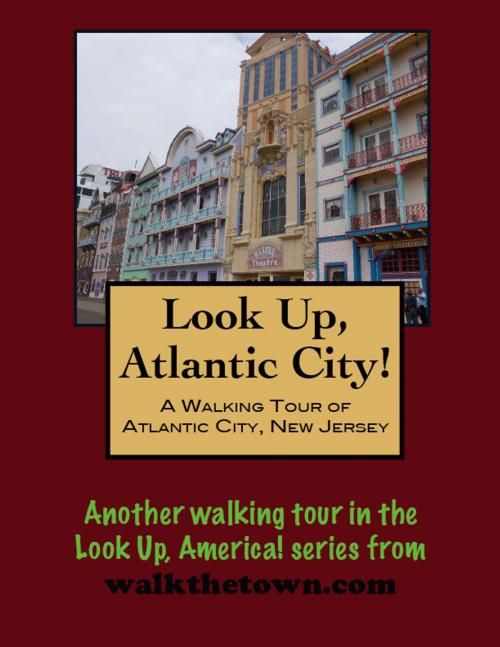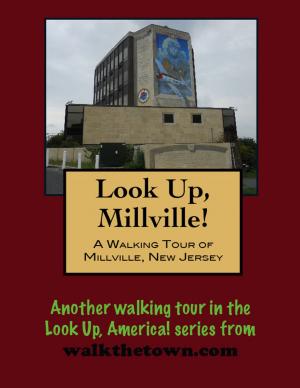| Author: | Doug Gelbert | ISBN: | 9781458121332 |
| Publisher: | Doug Gelbert | Publication: | March 2, 2011 |
| Imprint: | Smashwords Edition | Language: | English |
| Author: | Doug Gelbert |
| ISBN: | 9781458121332 |
| Publisher: | Doug Gelbert |
| Publication: | March 2, 2011 |
| Imprint: | Smashwords Edition |
| Language: | English |
There is no better way to see America than on foot. And there is no better way to appreciate what you are looking at than with a walking tour. This walking tour of Atlantic City, New Jersey is ready to explore when you are. Each walking tour describes historical, architectural landmarks, cultural sites and ecclesiastic touchstones and provides step-by-step directions.
Every tour also includes a quick primer on identifying architectural styles seen on American streets.
The first inhabitants of Absecon Island were the Lenni Lenape Indians who believed that you could no more own land than own the sky or the sunshine. The first European to hold an actual deed to what would become Atlantic City was an Englishman named Thomas Budd in the 1670s. His property on the mainland was valued at 40 cents an acre, the land over by the beach was worth only four cents and acre. Unlike others who would follow him, Thomas Budd was not a developer. Nothing much happened on Absecon Island for over a hundred years except when hunters arrived to take a few birds.
Jeremiah Leeds erected the first permanent structure on the island in 1785 and set about planting corn and rye and grazing cattle. By 1850 there were still only seven homesteads on Absecon Island, all but one a descendent from Leeds Plantation. About that time Jonathan Pitney, a prominent physician, and Richard Osborne, a Philadelphia engineer, got the idea that the salt air might be a health boon to the denizens of sooty Philadelphia. They launched the Camden-Atlantic City Railroad and on July 5, 1854 the first train chugged onto the island after a 150-minute trip.
Osborne got to name the new town and Pitney named the grid of streets so the streets running parallel to the ocean would be called after the earth’s great bodies of water and the cross streets would be named after the existing states. The first hotel, the Belloe House, was already in business by the time that first train arrived and massive block-hogging hotels would soon follow.
But these new hotel owners were having a problem they never encountered back in Philadelphia. There was sand all over the hotel carpets and passenger cars on the trains. Alexander Boardman (could that have been his real name?) got to thinking about the problem and he proposed creating an eight-foot wide wooden walkway from the beach to the town. The world’s first boardwalk was laid in 1870; it was taken up and stored every winter. Today’s Boardwalk, placed in a herringbone pattern of two-by-fours made of Bethabara hardwood from Brazil and Longleaf Yellow Southern Pine, of today is 60 feet wide, and 6 miles long.
By 1900 there was electricity in town and trolleys and rolling chairs on the Boardwalk amusement piers stretching ever further into the Atlantic Ocean. The population was 27,000 - a far cry from fifty years earlier. The name “Atlantic City” had the same magic that “Disney” now has. Our walking tour will try to find some remnants of that age scattered among the multi-billion dollar casinos that began arriving in 1976 with the mission of restoring the glitz of “America’s Favorite Playground”...
There is no better way to see America than on foot. And there is no better way to appreciate what you are looking at than with a walking tour. This walking tour of Atlantic City, New Jersey is ready to explore when you are. Each walking tour describes historical, architectural landmarks, cultural sites and ecclesiastic touchstones and provides step-by-step directions.
Every tour also includes a quick primer on identifying architectural styles seen on American streets.
The first inhabitants of Absecon Island were the Lenni Lenape Indians who believed that you could no more own land than own the sky or the sunshine. The first European to hold an actual deed to what would become Atlantic City was an Englishman named Thomas Budd in the 1670s. His property on the mainland was valued at 40 cents an acre, the land over by the beach was worth only four cents and acre. Unlike others who would follow him, Thomas Budd was not a developer. Nothing much happened on Absecon Island for over a hundred years except when hunters arrived to take a few birds.
Jeremiah Leeds erected the first permanent structure on the island in 1785 and set about planting corn and rye and grazing cattle. By 1850 there were still only seven homesteads on Absecon Island, all but one a descendent from Leeds Plantation. About that time Jonathan Pitney, a prominent physician, and Richard Osborne, a Philadelphia engineer, got the idea that the salt air might be a health boon to the denizens of sooty Philadelphia. They launched the Camden-Atlantic City Railroad and on July 5, 1854 the first train chugged onto the island after a 150-minute trip.
Osborne got to name the new town and Pitney named the grid of streets so the streets running parallel to the ocean would be called after the earth’s great bodies of water and the cross streets would be named after the existing states. The first hotel, the Belloe House, was already in business by the time that first train arrived and massive block-hogging hotels would soon follow.
But these new hotel owners were having a problem they never encountered back in Philadelphia. There was sand all over the hotel carpets and passenger cars on the trains. Alexander Boardman (could that have been his real name?) got to thinking about the problem and he proposed creating an eight-foot wide wooden walkway from the beach to the town. The world’s first boardwalk was laid in 1870; it was taken up and stored every winter. Today’s Boardwalk, placed in a herringbone pattern of two-by-fours made of Bethabara hardwood from Brazil and Longleaf Yellow Southern Pine, of today is 60 feet wide, and 6 miles long.
By 1900 there was electricity in town and trolleys and rolling chairs on the Boardwalk amusement piers stretching ever further into the Atlantic Ocean. The population was 27,000 - a far cry from fifty years earlier. The name “Atlantic City” had the same magic that “Disney” now has. Our walking tour will try to find some remnants of that age scattered among the multi-billion dollar casinos that began arriving in 1976 with the mission of restoring the glitz of “America’s Favorite Playground”...















